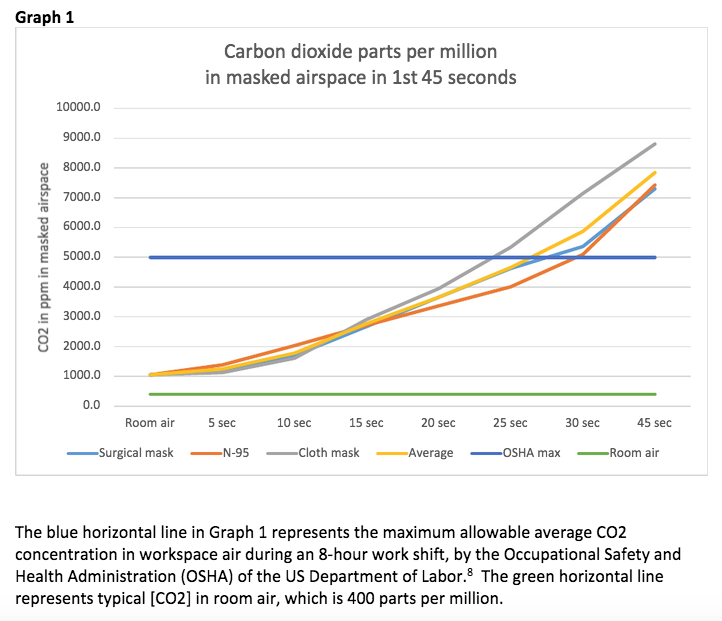Hypoxia, hypercapnia and physiological effects
November 2, 2020.
Completed peer-review and revised, November 9, 2020
Boris Borovoy, Colleen Huber, Maria Crisler
Boris A Borovoy, MPH has a Master in Public Health from Moscow Medical Academy; Colleen Huber, NMD is a Naturopathic Medical Doctor and Naturopathic Oncologist (FNORI), writing on topics of masks, COVID-19, cancer and nutrition; Maria Crisler is a microbiologist.
Abstract
Wearing a mask causes physiological changes to multiple organ systems, including the brain, the heart, the lungs, the kidneys and the immune system. We examine changes in oxygen and carbon dioxide concentrations in masked airspace that is available to the airways over the first 45 seconds of wear. Our findings of reduced oxygen and increased carbon dioxide in a masked airspace are not inconsistent with previously reported data. We also consider the range of injuries known to occur to the above-named organ systems in a state of hypoxia and hypercapnia. As an excretory pathway, carbon dioxide release by cells throughout the body, and then past the alveoli and then the airways and orifices, has not been previously challenged by deliberate obstruction in the history of the animal kingdom, except for relatively rare human experiments. Self-deprivation of oxygen is also unknown in the animal kingdom, and rarely attempted by humans. We examine the physiological consequences of this experiment.
Full article source on PDMJ – Primary Doctor Medical Journal:
https://pdmj.org/papers/masks_false_safety_and_real_dangers_part3/

This data clearly shows that in each of the 3 types of masks tested, CO2 concentration in the masked airspace exceeded the 5,000 parts per million safety limit set by OSHA in just 30 seconds. After 45 seconds the reading exceeded the 10,000 parts per million limit of the testing device.
